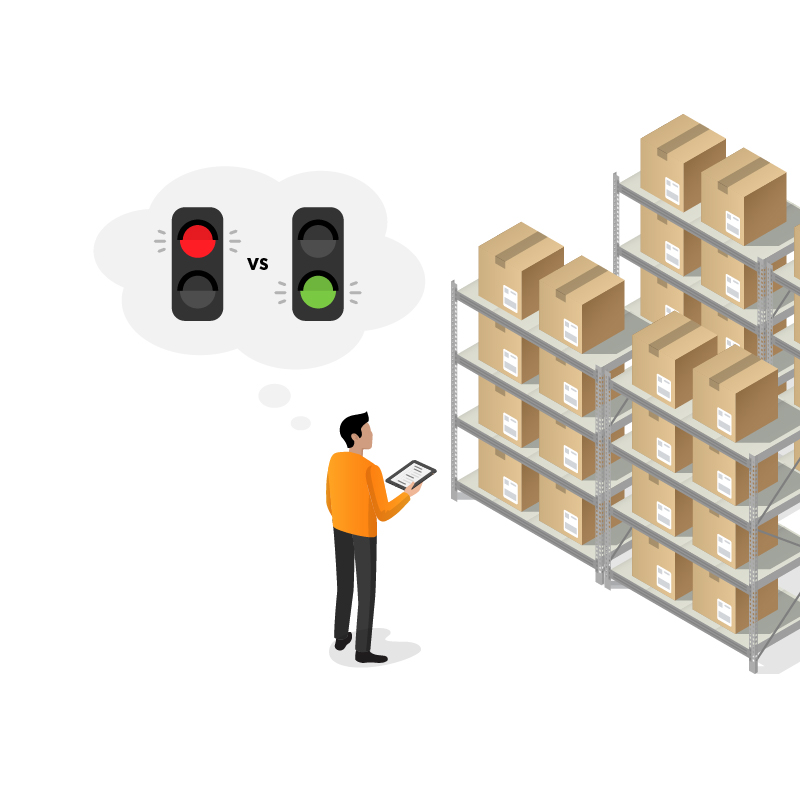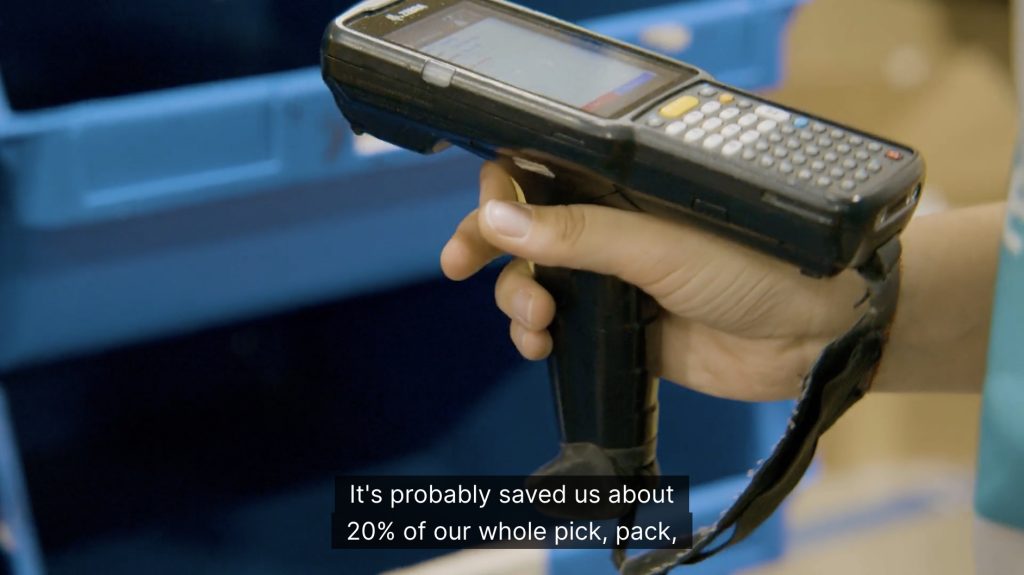A quick primer on MHE solutions
If you’ve been to any supply chain trade show lately, the traditional mix of consulting, software, and hardware is now peppered with overwhelming options for supply chain automation and MHE (Material Handling Equipment). For tenured professionals, it has to feel like The Future is Now!™, flush with science fiction.
We need to expand the definition of MHE and where it can be deployed.
In the hardware space, the industry moved far beyond traditional conveyance systems with the inclusion of retrieval systems, drones, autonomous and assistive vehicles, and robots of all shapes and sizes. Analysis paralysis is quickly becoming the rule of the day, and many firms are choosing “Do Nothing” about supply chain automation until clear winners are defined.
Is that you?
Don’t let the catalog size keep you from accessing the benefits of supply chain automation and MHE. Like most business decisions, your decision should start with a business problem or opportunity.
Here are 5 warehouse automation technologies leveling the playing field between incumbents and emerging brands.

Supply chain automation and MHE, worth the hype?
How do you know if you’re ready for supply chain automation? How will it make you better?
No one wants a system that isn’t deployed or under-utilized. You can’t get your ROI if there is no Return. It is important to ensure you have enough upside, as there is no such thing as a cheap MHE project.
There are elements of hardware, software, site engineering, installation, and tuning that go into every deployment. Very little of this can be done by in-house teams.
What to assess
So what do you want to assess when considering a supply chain automation or MHE system?
☑️ Volume and velocity
The biggest question is “How much volume” are you expecting the solution to handle?
You can think about this in two dimensions, peaks and durations. You may have incredible volume that you can’t process efficiently, but it’s only one week a year. You could have very consistent volume throughout the year, but it’s not rising to an unmanageable level – yet. Then everything in between.
It is easy to fixate on peak seasons. They are dramatic, but the critical factor for MHE is actually consistent flow.
Advice, trends, strategies, and examples to manage peak fulfillment smarter.

Due to the expense of MHE systems, you want to use them all the time. You will scope it to process a certain amount of volume and process that day in, day out. If you are on a good growth path, then maybe a little growth is baked into initially oversizing the system.
Sizing your automation solution for peaks means it’ll have significant downtime any other time.
☑️ Product profiles and homogeneity
In the same vein as consistent flow, the consistency of the product is important.
Even in traditional conveyance systems, there is a band of what can and can’t go on a belt. Too small and it’ll fall off or get stuck; too big and it can damage the rollers and motors or get stuck in tunnels and machines.
This trend continues with modern Automated Storage and Retrieval Systems (ASRS). Even if your assortment isn’t highly similar, subsections are.
It makes sense to automate the 20-30% of your assortment that is highly homogeneous and build the system to process just that product.
In advanced customers, we’ve seen multiple systems deployed, each one for a different profile of product. Often, multiple vendors and formats are orchestrated to serve the customer.
☑️ Upgrade, upsize, or move your warehouse?
How long do you plan to be in your current facility? If you’ve outgrown it, ask yourself, am I building this here, or does it make more sense to get a new facility?

It can seem logical to stay in place and upgrade, but some buildings lack the foundation, layout, or power infrastructure to support automation. In extreme cases, it could actually be a detriment that takes you backward for a hefty price tag.
It might make sense to segment your facilities and use the existing one for high-touch, manual processing and design a new automated facility for the product that lends itself to that.
In assessing whether you are ready for MHE, a hard look at the four walls should be part of it. That’s a critical area that an engineering firm can help you with as well.
☑️ Size of the prize
Finally, is a return on investment for MHE or ASRS even possible?
If it costs you $1M to put this system in, when can you realistically say you made that back?
Napkin math would be the total project cost over expected monthly savings (be conservative). Most projects of this type will usually come in around 18-24 months for total recoupment. Some projects could be as fast as 6-12 months when the systems are really getting leveraged.
Conversely, don’t be afraid to admit if the number is 48 months or more. When combined with the likelihood that you will take on some financing, it could show you that your operation isn’t a good fit for the project (at this time).
That’s not to say there is NO supply chain automation, but that specific project doesn’t pencil out. Consider swapping to a different project, or one scoped down for an immediate carve out in the business where the numbers make sense.
MHE can seem overwhelming. This detailed guide lays the right groundwork to simplify and help you get your strategy right: “Comprehensive Guide to Warehouse Management Maturity and Flexible Solutions”.

You have flexible options
Remember that analysis paralysis? It’s actually a great problem to have – you have options! There is creative innovation and disruption going on right now in MHE.
Maybe you don’t want to do a big engineering project. Consider robots and vehicles.
But, which ones? What type of tech foundation can get you there quickest and leave flexibility to adapt your automation stack as your needs change and grow? Do yourself a HUGE favor; get a modern warehouse management system (WMS) in place first. Systems like Deposco offer 150+ pre-built integrations to eliminate many risks in your long-term investments.
✴️ EXPLORE all Deposco integrations ✴️
Timing is everything
The space is starting to hit maturity on deployments. Firms are getting better at knowing what does and doesn’t work. Timelines to deploy have accelerated as both OEMs and their SI networks have figured out how to streamline the process. This pairs well with the above payoff curve analysis. The faster it’s up and running, the quicker it starts paying back.
Specialization in this space means there is a solution, available today, for your specific problem.
Types of supply chain automation systems
There are a lot of supply chain automation and MHE options from the tried and true to the latest and greatest! Here are a few categories to research:
Fixed-build automation solutions
Go the traditional engineering route and modify the building for your purpose.
- Conveyor belts to move product from storage to packing and the docks while minimizing worker movement
- ASRS systems combine storage bins with robots to bring the product to your team reducing searching and helping with ergonomics
- Mounted robots, such as arms, can perform pallet stacking and moving items between traditional conveyor systems
Automated guidance and sorting solutions

Altitude Sports: Put-wall with Deposco automatically sorts every item per order, saving 20% of their pick, pack, and ship activities.
It used to only mean limited routing options for conveyor belts or a manual cart process before packing.
- Pick to Light solutions drive your teams to their next task and provide feedback options directly at the rack
- Put-Walls can range from simple physical structures to integrated lighting guidance to full automation features.
Mobile robot solutions
There is now a whole spectrum of mobile robotics solutions that can be deployed in the warehouse from assistive to autonomous.
- Autonomous Mobile Robots that can perform programmed functions and routing
- Autonomous Guided Vehicles that are be deployed with a human actor such as powered carts, advanced versions are integrated with Put to Light
Where to start
Start with your use case or get referrals from your network. There is no one size fits all with supply chain automation, but there are a lot of sizes to choose from.
Need some inspiration?
Here are 2 examples of the various MHE systems that have worked very well for businesses using our WMS software:
- Altitude Sports reduced its time to fulfill by 20% using a put-wall feature of our WMS software, along with a 20% increase in productivity and 40-60% YOY growth in the 7 years of partnership with Deposco.
- Verst Logistics was using Locus Robotics with their previous WMS provider. After transitioning to Deposco’s more robust Locus Robotics integration, in collaboration with Deposco’s Professional Services Team, Verst redesigned their Locus Robotics integration and saw Units Picked Per Hour (UPH) go up by 51%
Size up the partner’s investment in YOU
During the evaluation and selection process, a business should prioritize the partner’s investment in their long-term success. This includes resources dedicated to accelerating value in <90 days, and their ability to flex with unique workflows vs. out-of-the-box functionality.
Plus, it’s important to look at their investments in ongoing, personalized support, and partnerships that enable new technologies to be added timely and effortlessly.
